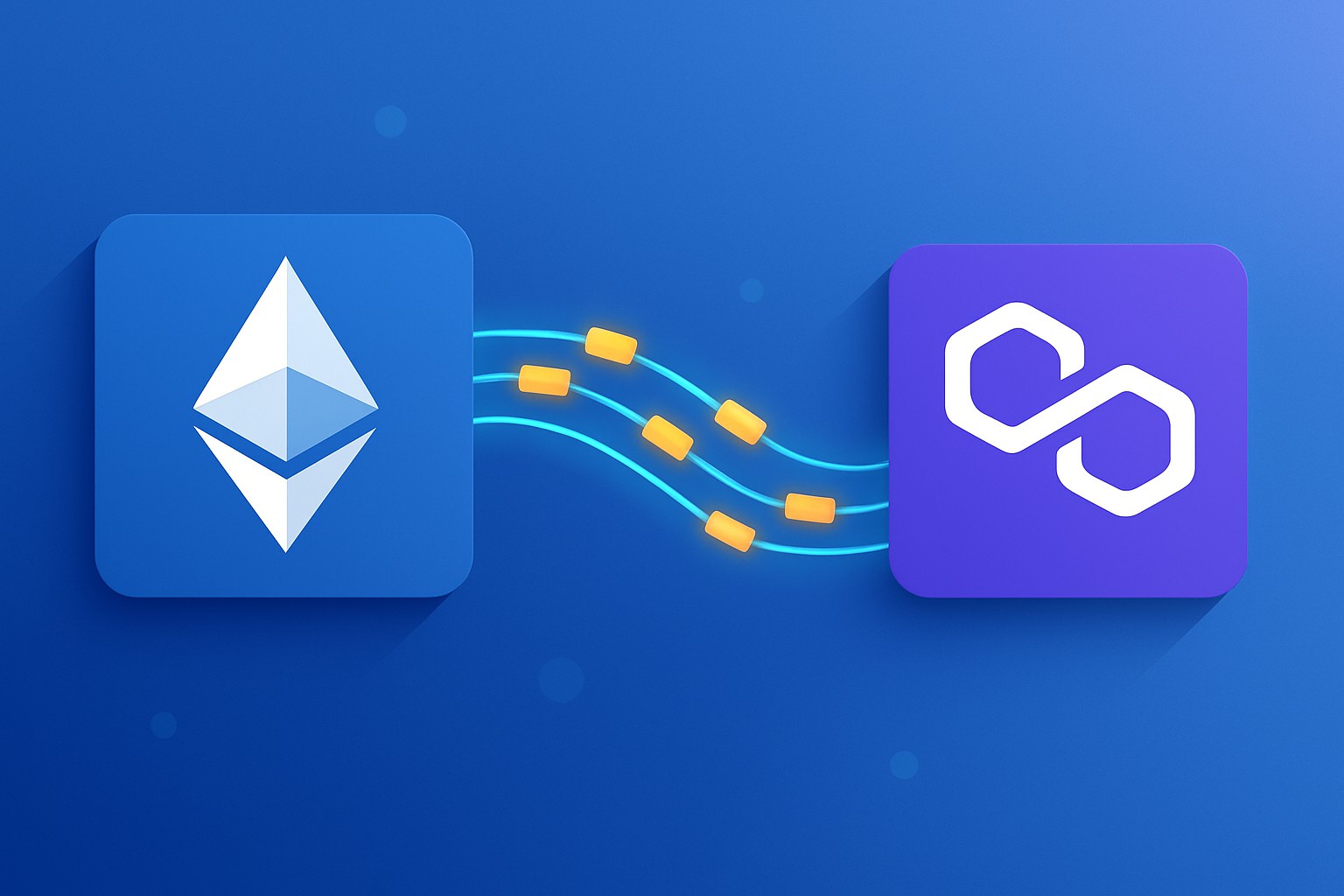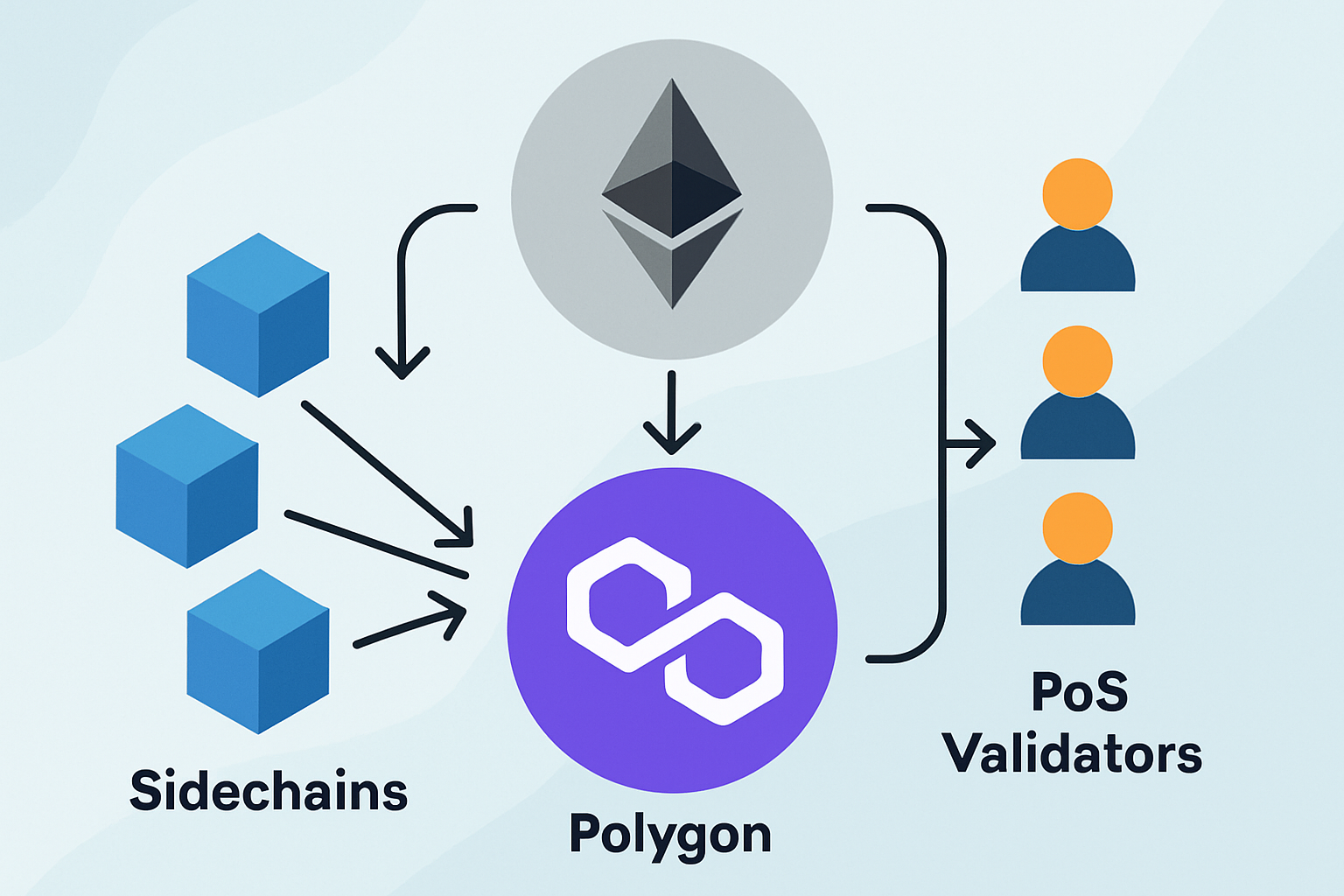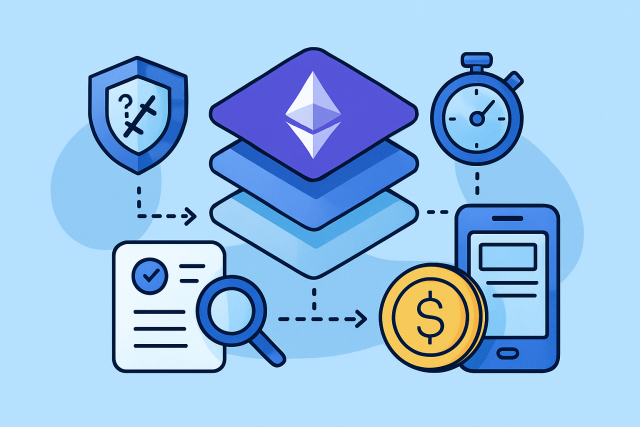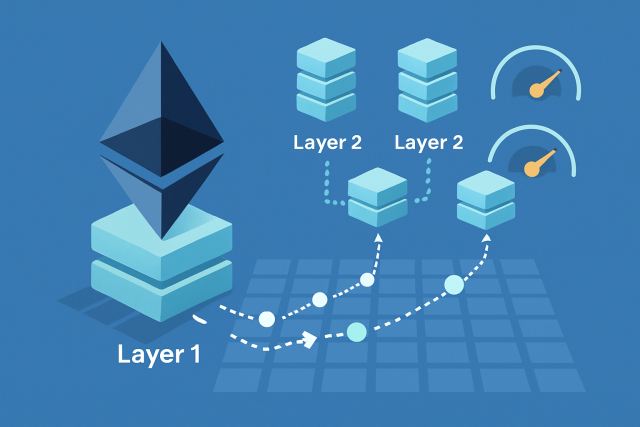What Is Polygon and How Does It Scale Ethereum?


Ethereum stands tall as one of the top dogs in the blockchain world for decentralized applications, though it’s no secret that it sometimes gets bogged down by slow transaction speeds and steep fees due to its scaling hurdles. This article dives into what Polygon is all about and how it lends a much-needed hand to Ethereum by ramping up speed and slashing costs, all while keeping security firmly in check.
So, what exactly is Polygon anyway?
Polygon, known to some old timers as Matic Network, is a Layer 2 scaling solution designed to boost Ethereum by taking transactions off the main blockchain.
Polygon is far more than just your run-of-the-mill sidechain. Think of it as a full-fledged framework designed to build and connect multiple blockchains that work seamlessly alongside Ethereum. Developers enjoy a neat toolkit that helps them whip up scalable decentralized applications that tend to breeze along without getting bogged down by the usual Ethereum mainnet traffic jams
Highlights of Polygon A Quick Rundown
- Leverages sidechains and commit chains to scale Ethereum giving transaction throughput a serious boost.
- Fully plays nice with Ethereum smart contracts and tools making the switch for developers feel pretty seamless.
- Offers transaction fees so low they practically invite microtransactions without breaking the bank.
- Delivers speedy confirmation times that really help smooth out the user experience in dApps.
- Uses a modular architecture that opens the door to tailor-made blockchain setups fitting different needs like a glove.
Understanding Ethereum's Scalability Challenge and Why It is Tricker Than It Looks
Ethereum’s rapid rise hasn’t come without its quirks. As the number of users climbs and decentralized apps mushroom, the network often hits traffic jams. This usually means slower transaction times and steeper gas fees.
- Network congestion usually leads to transaction backlogs, causing annoying delays that everyone hopes to avoid.
- High gas fees often make small transactions or casual use feel more like a luxury than everyday business.
- Slow confirmation times can really drag down application responsiveness, which does not do any favors for user satisfaction.
- Limited throughput means there’s a hard ceiling on how many transactions can be crammed in each second, no matter how much you wish otherwise.
Spotting these bottlenecks really sheds light on why Layer 2 solutions such as Polygon have quickly become a must-have in Ethereum's roadmap for scalability.
Understanding How Polygon Boosts Ethereum's Scalability Without Breaking a Sweat
Polygon relies on sidechains and commit chains to juggle transactions away from Ethereum's busy mainnet, which does wonders for speeding things up and cutting down those pesky fees. Individuals connect to Polygon's network, where validators get busy verifying transactions in a flash. Then, Polygon bundles these transactions into checkpoints at regular intervals and sends them back over to Ethereum's mainnet. This clever trick known as checkpointing essentially anchors Polygon's security to Ethereum's rock-solid consensus, letting it keep its decentralized charm while boosting scalability and speed.
A Closer Look Under the Hood of Polygon’s Plasma Chains
Polygon uses Plasma technology to bundle several off-chain transactions into one neat on-chain submission. This batching trick lets many transactions get grouped and confirmed at once instead of each one clogging Ethereum's network and slowing things down or raising fees. Plasma chains speed up transaction processing and cut costs while relying on Ethereum as the ultimate authority for security if disputes arise.
Where security meets speed in the blockchain race
Besides Plasma, Polygon also operates a Proof-of-Stake sidechain guarded by its own dedicated validators. This PoS chain provides a speedy and secure platform that supports Ethereum-compatible smart contracts, making the back-and-forth transfer of assets between Polygon and Ethereum feel surprisingly smooth. Validators put up native tokens to keep the network locked down and incentivize playing by the rules.
A user kicks off a transaction on Polygon’s sidechain happily benefiting from lower fees and faster confirmation times that make life easier.
Polygon validators jump on it right away processing and confirming the transaction smoothly and reaching consensus without breaking a sweat.
Once enough transactions have piled up Polygon bundles them into a checkpoint like packing a well-organized suitcase.
This checkpoint then makes its way over to the Ethereum mainnet tying Polygon’s state and security to Ethereum’s rock-solid tried-and-true network.
This clever hybrid design hits a sweet spot between speed, low transaction costs and reliable security measures. This is exactly why Polygon has blossomed into one of Ethereum’s go-to scaling platforms.
Why Polygon Seriously Shines When It Comes to Scaling Ethereum
- Transaction fees on Polygon are usually a tiny fraction of those on Ethereum which opens the door to new possibilities.
- Faster transaction confirmations make for a smoother ride for dApps and their users and cut down on frustrating waits.
- Being fully compatible with Ethereum means moving smart contracts and wallets is a breeze with no headaches or extra steps.
- With a rapidly growing developer community and solid ecosystem backing, innovation happens at a lively pace. This paves the way for broader adoption.
- It boosts scalability while still holding on to Ethereum's core security and strikes a neat balance.
Polygon plays nicely with popular Ethereum developer tools such as MetaMask and Remix, allowing developers to deploy and test dApps in familiar surroundings.

Typical Use Cases and Practical Examples That Really Hit Home
Polygon has really carved out its spot as the go-to scaling platform for many decentralized finance projects and NFT marketplaces as well as blockchain-based games.
- DeFi platforms that offer lending, borrowing and yield farming enjoy lower costs and faster transactions, making the process smoother and more wallet-friendly.
- NFT marketplaces often lean on Polygon to mint and trade digital assets without breaking the bank. This is a real lifesaver for creators and collectors alike.
- Blockchain games benefit from lightning-quick microtransactions and seamless state updates without high fees slowing things down.
- Small frequent payments become doable, opening the door to broader and more practical use of blockchain technology in everyday life.
- Enterprises turn to Polygon when they need scalable private or consortium blockchains linked to Ethereum. This offers a balance of security and flexibility.
Polygon provides a solid infrastructure that’s a real game-changer for both startups and established projects looking to build decentralized applications.
What You Should Know
Polygon delivers some impressive scalability boosts but like anything worth having it’s not without quirks. For starters its validator set is smaller than Ethereum’s which stirs up concerns about centralization. Since Polygon leans on Ethereum’s security for checkpointing it adds complexity and potential vulnerabilities sneak in.
- The centralization of validators often sparks concerns around potential censorship and raises the ever-persistent question of who really pulls the strings behind the scenes.
- Security mostly depends on just how final and robust Ethereum's mainnet proves to be—no small feat, I might add.
- Liquidity can get a bit scattered like leaves in the wind when assets are split between Ethereum and Polygon.
- Users frequently wrestle with the headache of juggling their assets across multiple chains and bridges, which can feel like trying to herd cats at times.
Understanding these challenges gives users and developers a clearer picture when deciding if Polygon truly fits their specific application needs, or if they might be better off exploring other Layer 2 solutions.
Getting Started with Polygon Your Friendly Guide to Dive Right In
Getting started with Polygon is surprisingly straightforward for both users and developers alike. The main steps boil down to connecting a compatible wallet and moving assets onto Polygon using bridges. Then you can dive into decentralized applications. Developers can deploy smart contracts with Ethereum tools they already know while keeping a watchful eye on network activity.
Get yourself a wallet that works with Polygon such as MetaMask and hook it up to the Polygon network.
Take a moment to use the official Polygon Bridge to ferry your Ethereum assets over to Polygon safely and smoothly.
Once you are set, explore the growing world of dApps on Polygon from decentralized finance to gaming and those catchy NFTs everyone talks about.
For developers, good news: you can deploy smart contracts using familiar Ethereum tools like Remix or Truffle without new gizmos.
Don’t forget to keep tabs on your transactions and gas fees by checking out Polygon's block explorers; they’ll keep you updated on all the latest activity and costs without breaking a sweat.
These practical steps help lower the barriers to entry and pave the way for wider adoption by providing an accessible and secure path to tap into Polygon's scaling benefits.





